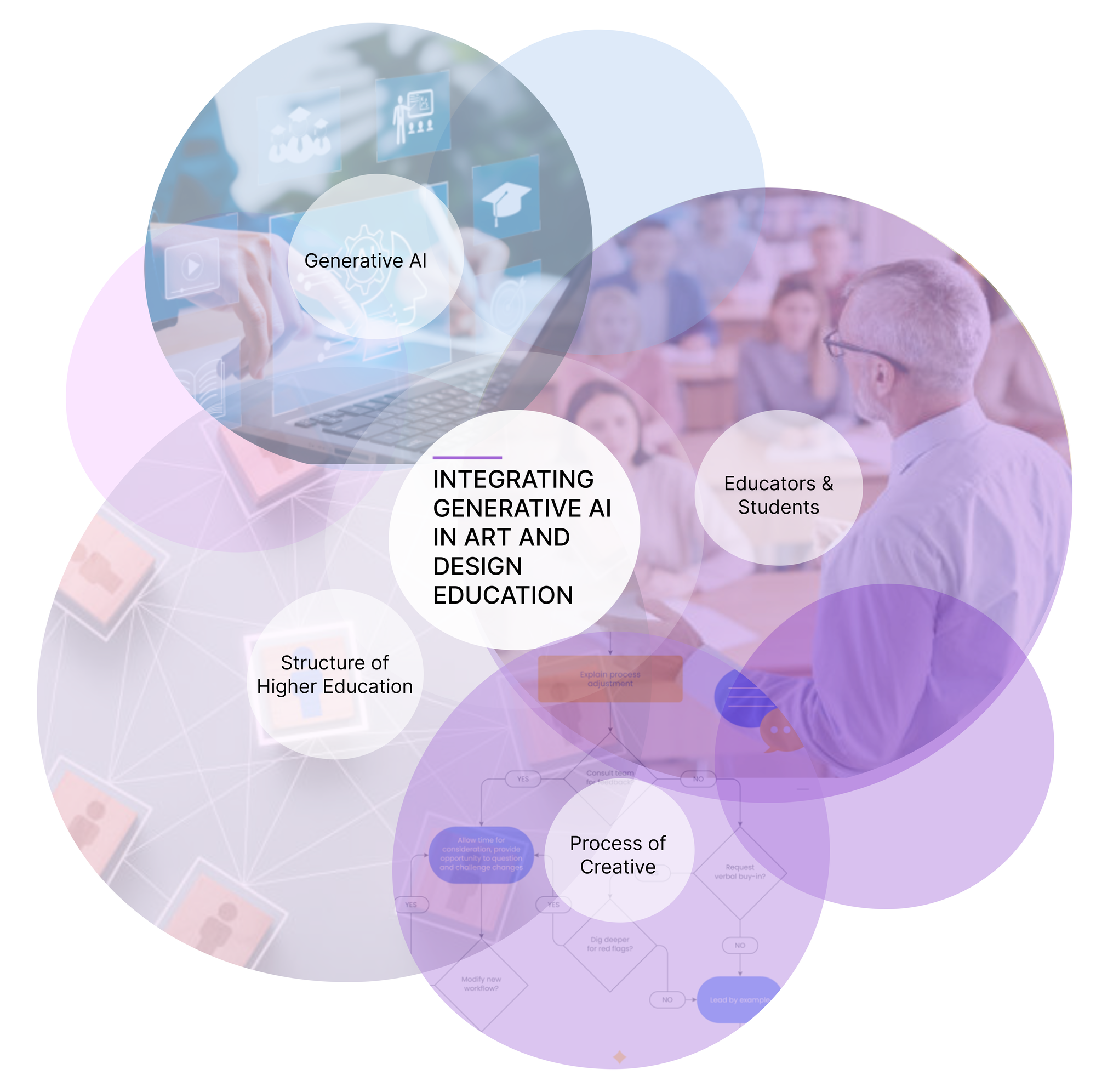Bridging Creativity and Technology: Integrating Generative AI in Art and Design Education

Topic
In this thesis, I’m diving into how generative AI tools can be meaningfully integrated into art and design education at the Bern University of the Arts (HKB). I look at the technical, social, and pedagogical factors that shape this process through the eyes of both educators and students. Using a Socio-Technical Systems (STS) lens, I explore how AI tools interact with the broader learning environment, aiming to develop design guidelines that support and enhance creative teaching and learning.
Relevance
The generative AI revolution is transforming creative disciplines, but many educators and institutions are still understanding how to make it work in the classroom. This thesis addresses the gap by providing a framework for aligning ethical, pedagogical, and technological needs. This research will benefit educators and product designers who want to build or integrate AI tools to enhance learning while maintaining creativity, critical thinking, and artistic integrity.
Results
According to the study, AI can expand creative possibilities and enhance efficiency, but it lags in social dimensions like authorship, originality, and critical student engagement. Students enjoy using AI to start ideas, but they’re cautious about how it affects the originality of their work. Artistic integrity is still a big concern. To make AI work in art education, we need tools that are ethically designed, transparent, and backed by solid teaching and tech support, plus a balanced approach that advances technological innovation and human-centered elements.
Implications for Practitioners
Here are a few takeaways:
Build AI training programs that meet educators’ real needs.
Use AI tools that not only boost efficiency but also support students’ well-being.
Make sure students stay in the driver’s seat, transparency, and creative control matter.
Encourage collaboration between educators, students, and technologists, co-creating is key.
Think holistically: use a Socio-Technical Systems approach to balance tech and human elements for long-term success.
Methods
To get a holistic picture, I used a qualitative approach. I interviewed seven educators from different departments at HKB and in Germany. Additionally, we conducted two workshops with 21 art and design students. All conversations were recorded, transcribed, and carefully analyzed using a thematic approach, through the lens of Socio-Technical Systems (STS). This helped me understand not just the technology, but also the human dynamics, challenges, and opportunities behind it, capturing the real challenges and opportunities of bringing AI into creative education.
